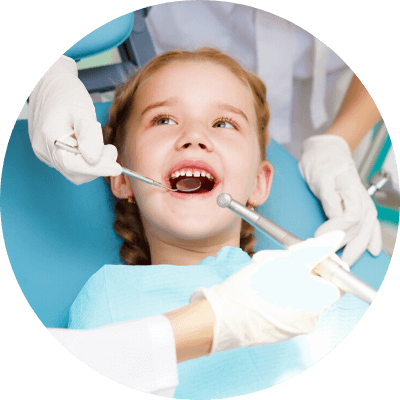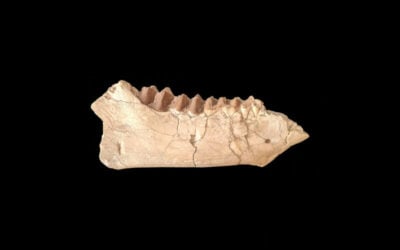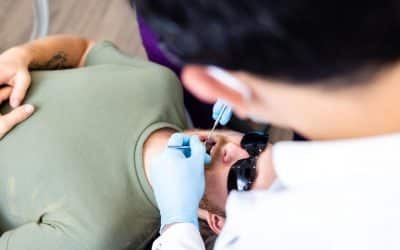Chalky Teeth: Is the Writing on the Wall?
Chalky Teeth: Is the Writing on the Wall?
Chalky teeth. A term coined in 1920 by eminent 19th century physician and dentist Bernhard Gottlieb. He belonged to a group of Viennese scientists who originated orthodontics, periodontics, pedodontics, oral surgery and endodontics. Gottlieb described ‘chalky enamel’ and ‘chalky spots’ that ‘crumble’ easily in teeth disrupted developmentally by childhood disorders including “rachitis” (rickets or vitamin D deficiency).
It’s known as hypomineralisation, or molar-incisor hypomineralisation. Outer tooth enamel, most commonly molar, doesn’t form properly, comprises much less mineral compound and is thereby softer and chalk-like. Established from over 40 different studies, between 15-20% of children are affected by MIH. There is a spectrum of variation – it can vary from the very mild, to the very major where teeth actually disintegrate.
Scientists are baffled by its cause.
On an average day in England, 140 children enter hospital to have rotten teeth removed under general anaesthetic. They may get a day or two off school, but it pales in comparison with the dental trauma and surgery. Preventable in 90% of cases diet and inadequate dental hygiene are the obvious culprits.
Far more confusing to modern dentistry is what lies behind the decay in those for whom bad diet and sporadic brushing are not responsible.
Some dentists report a rise in the number of cases, and the condition remains poorly understood.
This considerable, and alarmingly more common condition affects the first four adult molars, which come through around six years of age. Often just one tooth affected. At its most extreme, a tooth will start crumbling soon after it has erupted; the most mild incur a slight discolouration. Either way the enamel is thinner, softer, and more prone to being dissolving. This type of tooth surface allows bacteria to proliferate, and teeth are much more prone to decay. Fluoride treatments, and strict brushing and dietary routines are the only way to save them.
For parents, precision tooth brushing with a six-year-old is challenging at best; this condition, like decay, renders affected teeth extremely sensitive. For a child, brushing and dental examinations even by our gentle Sunbury dentists can be unbearable.
Forty years of academic study and research reveals very little about what causes MIH. Links have been made to deficient prenatal care, birth trauma, breathing problems and viral infection. Pollution has been suggested as a factor. But none prove a strong enough association as the cause of the condition.
It leads the belief to have the primary cause as environmental, rather than genetic. Molars are formed at birth and undergo a hardening process over the next few years; a process much like constructing a sponge and pumping concrete into it. It is believed that some interference happens in those first two years, when that concrete is filling the spaces.
The reason dietary deficiencies are an unlikely to trigger is because you would expect symmetry, and MIH has seemingly random coverage. A tooth on one side can be perfect; on the other side, a tooth that developed at exactly the same time, is affected. Even in cases where all four molars are affected, one or two will be much worse.
If there’s an impression that MIH is a contemporary disease, evidence of it has been found in 300-year-old skeletons. German and Scandinavian researchers have charted a prevalence that goes up and down rather than a steady rise or notable decline.
The worst years in their studies had more than twice as many cases as the best.
Nobody can explain that.
It’s almost as if there’s something in the background changing and influencing susceptibility.
Occasionally, white or yellowish marks also appear on the front permanent teeth, which are rarely more than a cosmetic issue and quite easily dealt with. It has become apparent in the last few years that hypomineralisation is not necessarily linked to decay, but working to reduce the tooth decay in children is far from a useless pursuit.
It’s certainly easier than treating MIH, which essentially, is rather difficult. Apart from limited options, the pain and sensitivity for the child means that to numb the teeth in order to treat them is usually impossible, which deems any procedure be done under general anaesthetic.
Affected teeth are very hard to fill; the material used is designed to adhere to healthy, mineral-intact enamel. Without this structure the treatment just doesn’t stick, and the tooth just continues to erode. Sometimes dental crowns are an option but often there is so much damage the only outcome is extraction.
MIH or no MIH, what can parents do to stop the rot?
With up to 12% of children suffering decay at three years of age, dentists recognise that bad habits start at weaning. Letting a child take a bottle of milk or juice to bed at night is really, really damaging for the teeth, and truly damaging pattern of behaviour to establish.
Similarly, a toddler carrying a bottle of juice around all day keeps the decay going – like throwing accelerant on a fire. Cups instead of bottles, removing juice altogether or at least limiting its consumption to mealtimes helps avoid this. Unhealthy snacking is completely unnecessary; a child only knows what you give them. Chips and sweets stick to their teeth and saliva enzymes break that starch into sugars – again, beckoning decay.
Using recommended fluoride-level toothpaste is strongly recommended; for under threes that’s 1000ppm. The dental advice now is to spit and not rinse at night, because leaving fluoride in your mouth protects and repairs teeth while you sleep.
Clearly children under three always need an adult to brush for them, but they should always be encouraged to have a go themselves each time. As a parent, you’ll be supervising until they’re around seven, by which time their regular dental check-ups will have influenced and educated their oral hygiene techniques.
The best thing to do in terms of MIH is to identify condition early. And that starts with having the kids at the dentist around age 3. Monitoring hypomineralisation means it can be managed, and with exponential developments in science and dentistry there may soon be a breakthrough in its cause that leads to prevention and cure, rather than treatment.
Note: All content and media on the Sunbury Dental House website and social media channels are created and published online for informational purposes only. It is not intended to be a substitute for professional medical advice and should not be relied on as health or personal advice.
Services we mentioned:
More Dental Articles
Having A Smart Mouthguard Is A Life Changing Game Changer
In early 2023, the top league of professional players in Australasia, the NRL, along with Football Australia, acknowledged before a Senate committee the link between head trauma and serious neurodegenerative disease. Representatives from the major Australian contact...
Dentistry Has Its Dinosaurs, Its Old Fossils & Its Neanderthals
We human beings, we Homo sapiens have trouble coming to terms with deep time. What is deep time? Anything much more than last week (LOL). No, stuff that happened eons ago is outside of our ken. We are so very much caught up with our own concerns and future. Thinking...
Children’s Dental Health Month in February: Does It Achieve Anything?
Since 1955, February has trumpeted its calendar-self to focus on the mouths of babes. (And toddlers, tweens and teens.) Finding out via Google isn’t as curiously synchronistic as simply wondering if February is the chosen month because of what it symbolises, or...
Think You’re Really Lucky? Then You Probably Have Gum Disease
People who are lucky are more likely to have gum disease, a 2022 Periodontology Symposium in Paris has been told…















